Fruits

Alabama homeowners can use this helpful resource to identify pests and diseases that might be affecting their fruit crops. The information is a companion to Extension publication “Home Orchards Disease and Insect Control Recommendations Guide” (IPM-1308). Photos are organized by pest and disease type, offering a visual aid to homeowners. Some pests and diseases are depicted in multiple photos, providing a better understanding of how they affect the fruit, leaves, or stems. Each pest and disease is associated with the fruit crops commonly grown in Alabama. Homeowners who still have questions about identifying pests and diseases should contact their local Extension office.
Table 1. Apple, Blackberry, Blueberry, Peach, Strawberry
| Photo | Description |
|---|---|
 | 1a: DISEASE Anthracnose of Blueberry (Colletotrichum Spp.) (Photo credit: Gerald Holmes, Strawberry Center, Cal Poly San Luis Obispo, Bugwood.org) |
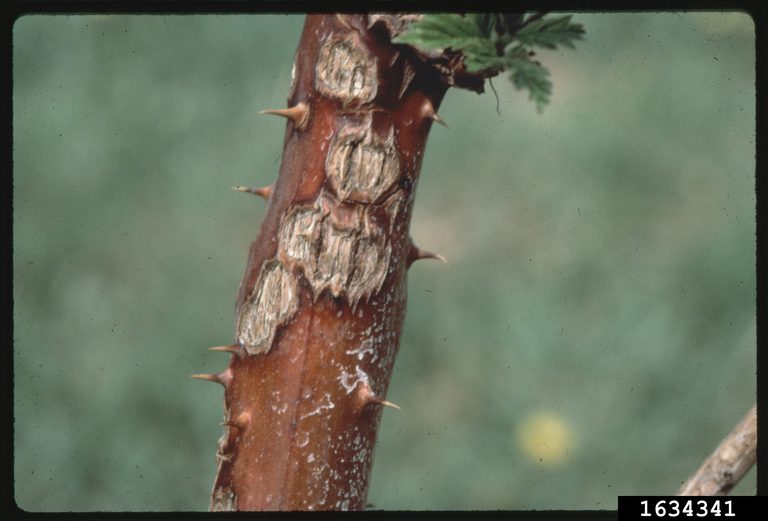 | 1b: DISEASE Anthracnose of Blackberry Stem (Elsinoe veneta) (Photo credit: Penn State Department of Plant Pathology & Environmental Microbiology Archives, Penn State University, Bugwood.org) |
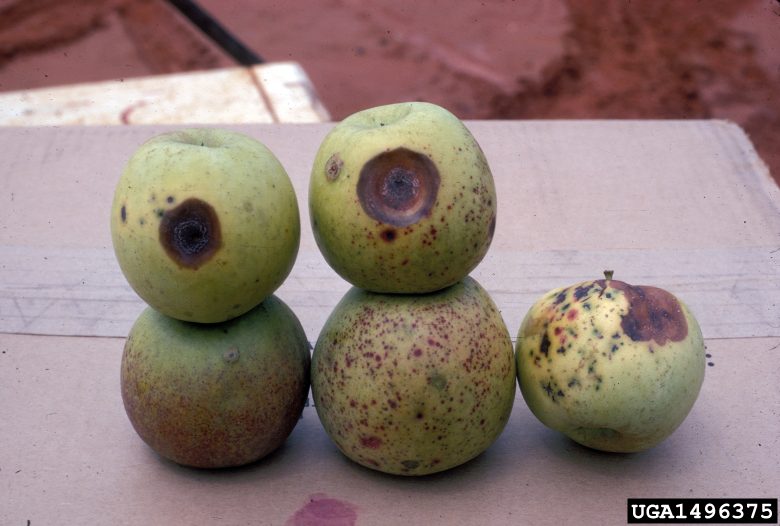 | 1c: DISEASE Anthracnose of Apple (Bitter Rot) (Colletotrichum spp.) (Photo credit: University of Georgia Plant Pathology, University of Georgia, Bugwood.org) |
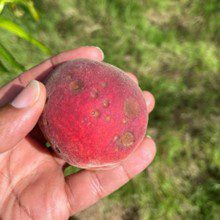 | 1d: DISEASE Anthracnose of Peach (Colletotrichum spp.) |
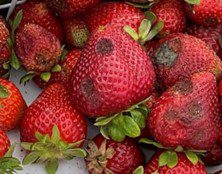 | 1e: DISEASE Anthracnose of Strawberry (Colletotrichum spp.) |
Table 2. Plum and Peach (Primarily a Problem on Plum)
| Photo | Description |
|---|---|
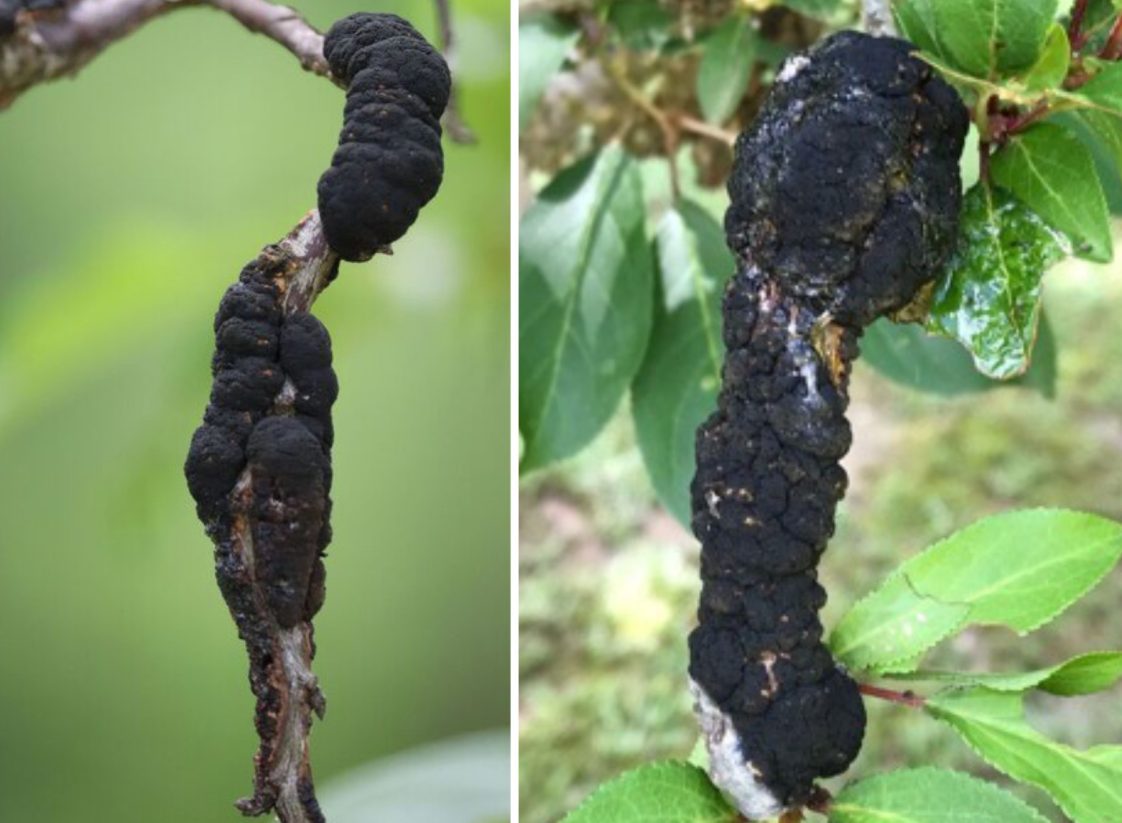 | 2: DISEASE Black Knot of Plum (Apiosporina morbosa) (Photo credit: Rebecca A. Melanson, Mississippi State University Extension, Bugwood.org) |
Table 3. Grapes, Bunch Grapes, Muscadine
| Photo | Description |
|---|---|
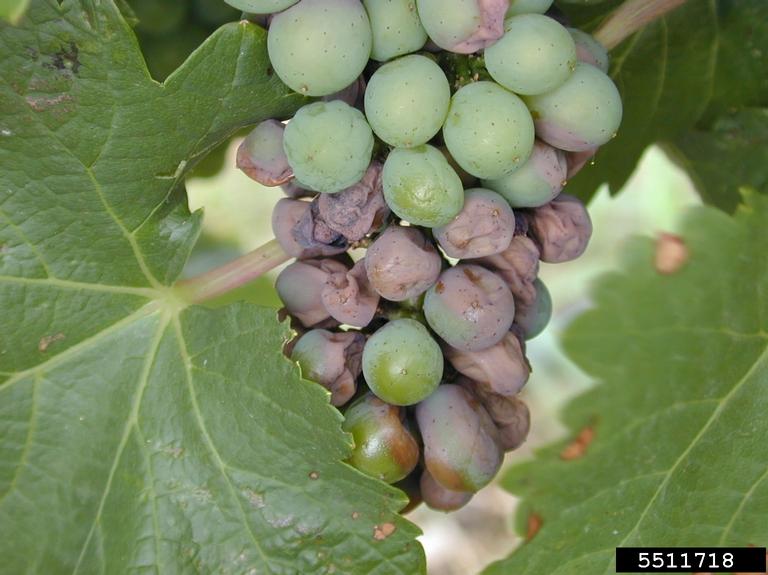 | 3a: DISEASE Black Rot of Grape (Phyllosticta ampelicida, synonym Guignardia bidwellii) (Photo credit: Brian Olson, Oklahoma State University, Bugwood.org) |
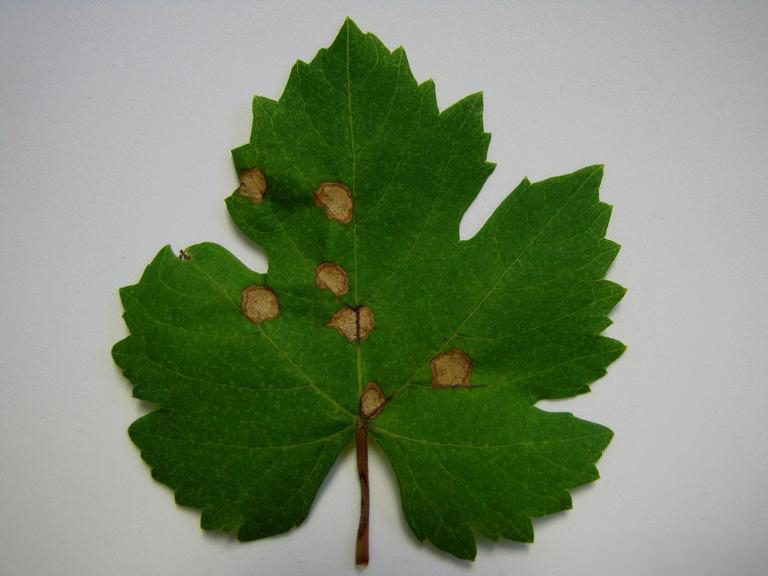 | 3b: SYMPTOMS Black Rot of Grape (Leaf Symptoms) (Photo credit: Cesar Calderon, Cesar Calderon Pathology Collection, USDA APHIS PPQ, Bugwood.org) |
Table 4. Blackberry
| Photo | Description |
|---|---|
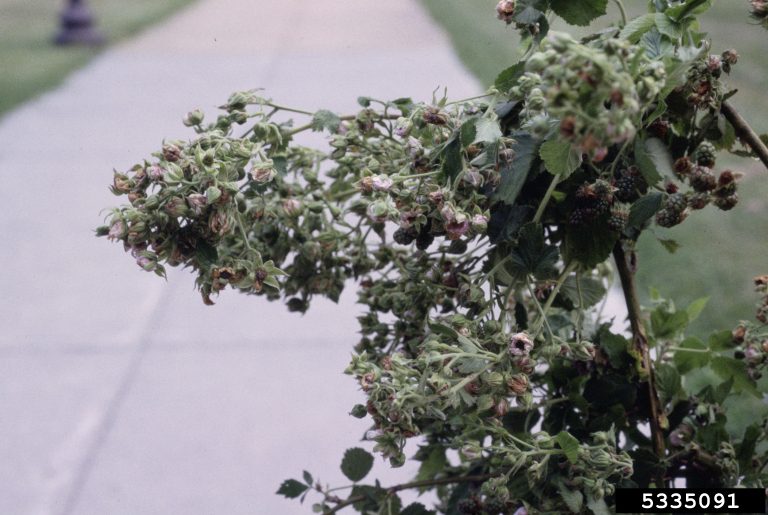 | 4: DISEASE Blackberry Rosette Double Blossom (Cercosporella rubi) |
Table 5. Peach, Nectarine, Other Stone Fruit
| Photo | Description |
|---|---|
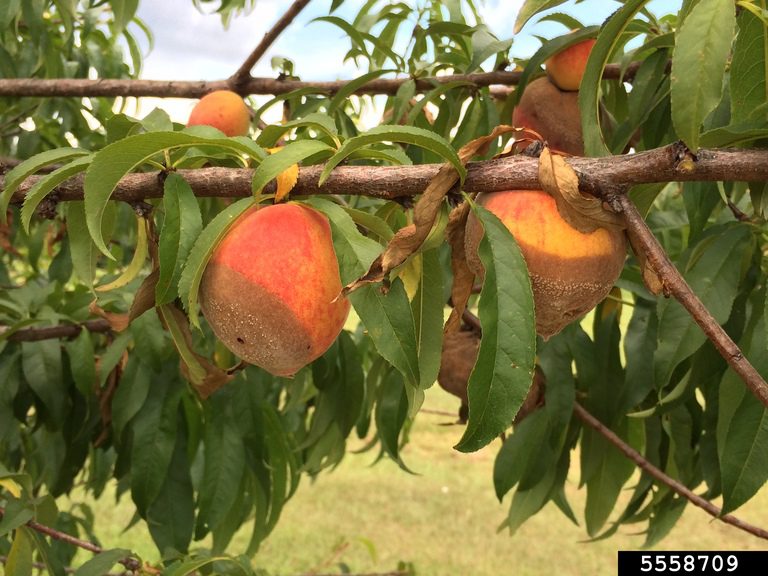 | 5a: DISEASE Brown Rot of Peach (Monilinia fruticola) (Photo credit: Rebecca A. Melanson, Mississippi State University Extension, Bugwood.org) |
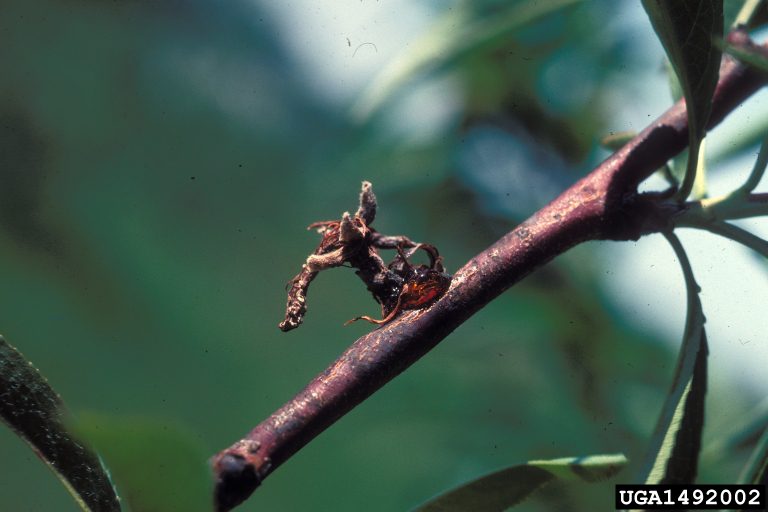 | 5b: DISEASE Brown Rot on Peach Blossom (Blossom Blight) (Photo credit: University of Georgia Plant Pathology, University of Georgia, Bugwood.org) |
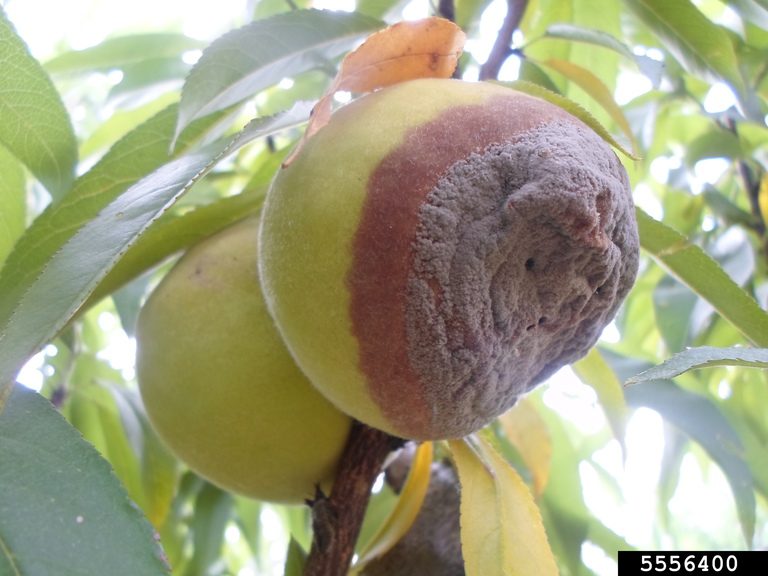 | 5c: DISEASE Brown Rot on Green Peach Fruit (Green Rot) (Photo credit: Jonas Janner Hamann, Universidad Federal de Santa Maria [UFSM], Bugwood.org) |
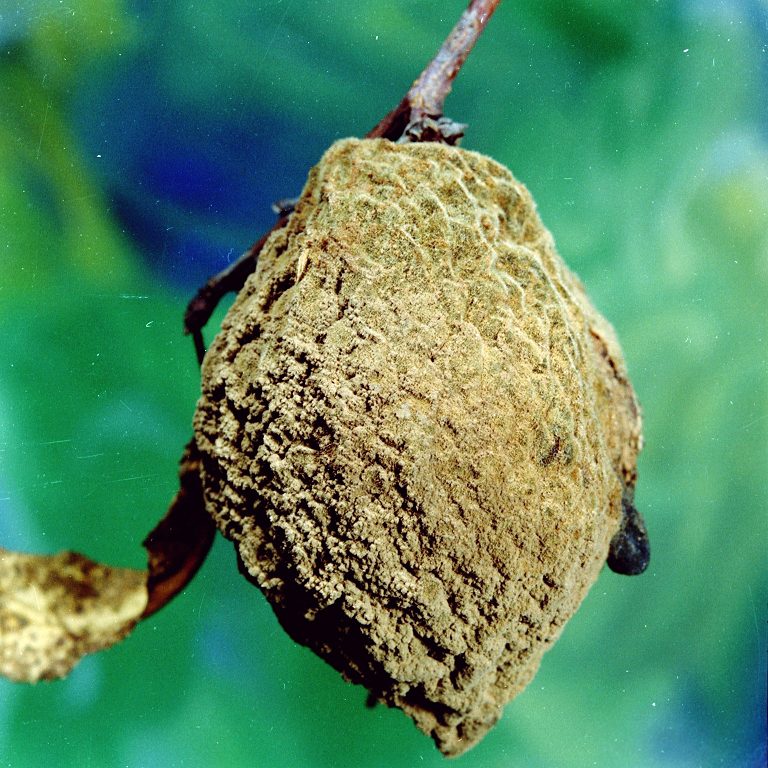 | 5d: DISEASE Brown Rot on Mummy Fruit (Photo credit: Clemson University - USDA Cooperative Extension Slide Series, Bugwood.org) |
Table 6. Apple and Pear
| Photo | Description |
|---|---|
 | 6: DISEASE Fire Blight on Apple (Erwinia amylovora) (Photo credit: P. G. Psallidas, Benaki Institute, Athens, Bugwood.org) |
Table 7. Blackberry, Raspberry, and Other Caneberries
| Photo | Description |
|---|---|
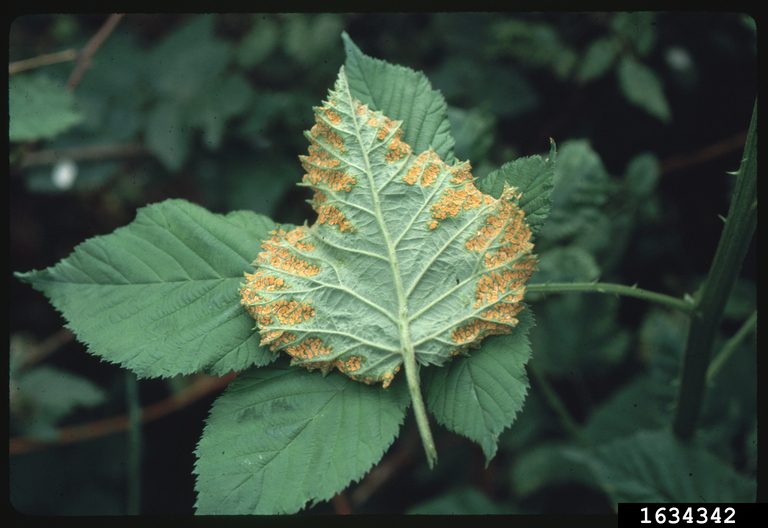 | 7: DISEASE Orange Rust of Blackberry (Gymnoconia nitens and Arthuriomyces peckianus) (Photo credit: Penn State Department of Plant Pathology & Environmental Microbiology Archives, Penn State University, Bugwood.org) |
Table 8. Peach and Other Stone Fruit
| Photo | Description |
|---|---|
 | 8: DISEASE Peach Leaf Curl (Taphrina deformans) (Photo credit: Paul Bachi, University of Kentucky Research and Education Center, Bugwood.org) |
Table 9. Grape, Peach, Plum
| Photo | Description |
|---|---|
 | 9: DISEASE Phomopsis on Grape (Phomopsis viticola) (Photo credit: Elizabeth Bush, Virginia Polytechnic Institute and State University, Bugwood.org) |
Table 10. Apple, Peach
| Photo | Description |
|---|---|
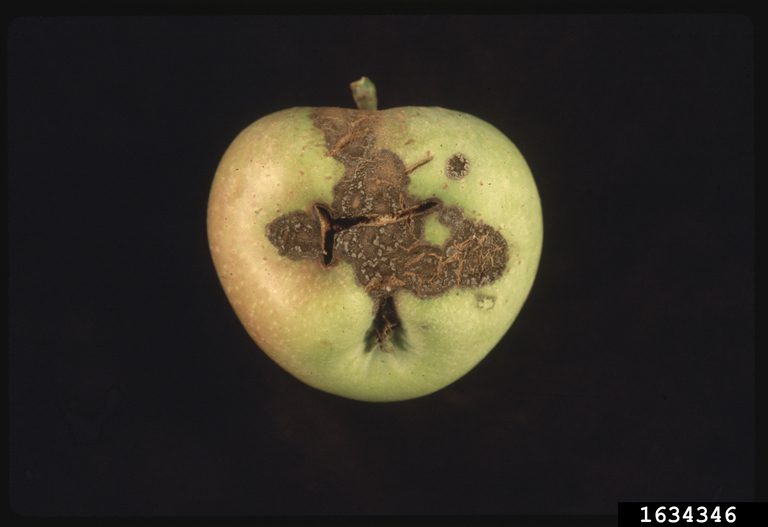 | 10a: DISEASE Scab on Apple (Venturia inaequalis) (Photo credit: Penn State Department of Plant Pathology & Environmental Microbiology Archives, Penn State University, Bugwood.org) |
 | 10b: DISEASE Scab on Apple (Venturia inaequalis) (Photo credit: University of Georgia Plant Pathology, University of Georgia, Bugwood.org) |
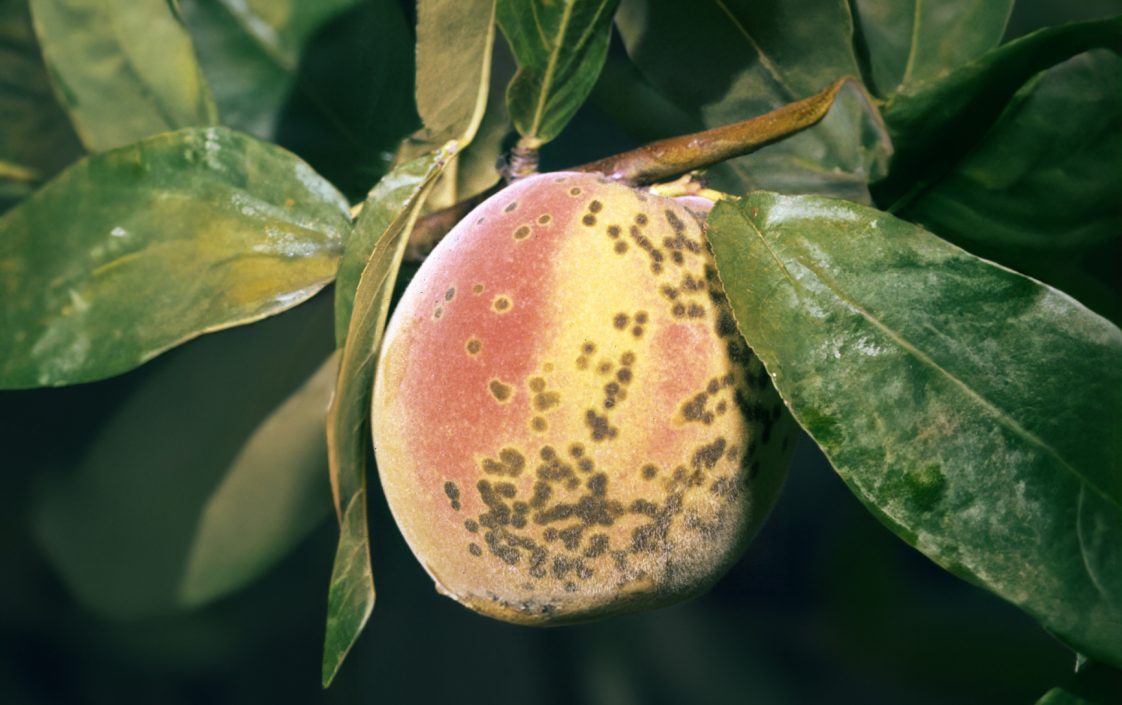 | 10c: DISEASE Scab on Peach (Cladosporium carpophilum) (Photo credit: Clemson University - USDA Cooperative Extension Slide Series, Bugwood.org) |
Table 11. Apple
| Photo | Description |
|---|---|
 | 11: DISEASE Sooty Blotch and Flyspeck on Apple (Sooty blotch is caused by several different fungi. Flyspeck is caused by the fungus Zygophiala jamaicensis.) (Photo credit: John Hartman, University of Kentucky, Bugwood.org) |
Table 12. Apple
| Photo | Description |
|---|---|
 | 12: DISEASE White Rot on Apple (Botryosphaeria dothidea) (Photo credit: University of Georgia Plant Pathology, University of Georgia, Bugwood.org) |
Table 13. Grape
| Photo | Description |
|---|---|
 | 13: DISEASE Downey Mildew on Grape (Plasmopara viticola) (Photo credit: Penn State Department of Plant Pathology & Environmental Microbiology Archives, Penn State University, Bugwood.org) |
Table 14. Strawberry
| Photo | Description |
|---|---|
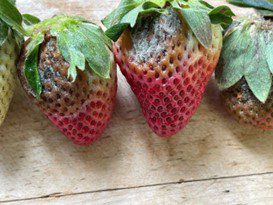 | 14: DISEASE Gray Mold (Botrytis cinerea) |
Table 15. Apple, Pear
| Photo | Description |
|---|---|
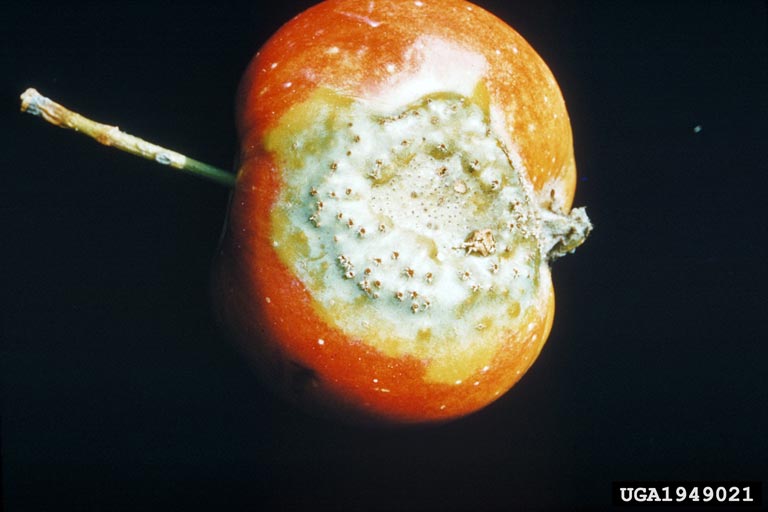 | 15a: DISEASE Cedar-Apple Rust on Apple (Gymnosporangium juniperi-virginianae) (Photo credit: E. F. Wicker, USDA, Bugwood.org) |
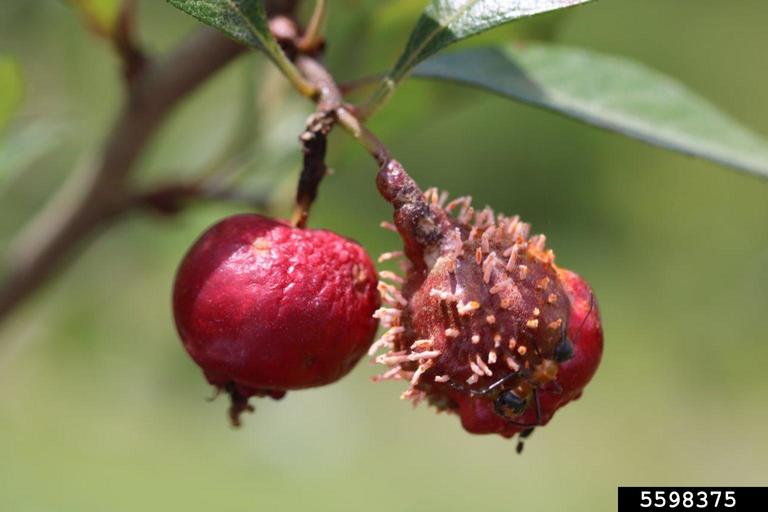 | 15b: DISEASE Quince Rust (Gymnosporangium claviceps) (Photo credit: Edward Sikora Auburn University, Bugwood.org) |
Table 16. Apple, Pear, Peach
| Photo | Description |
|---|---|
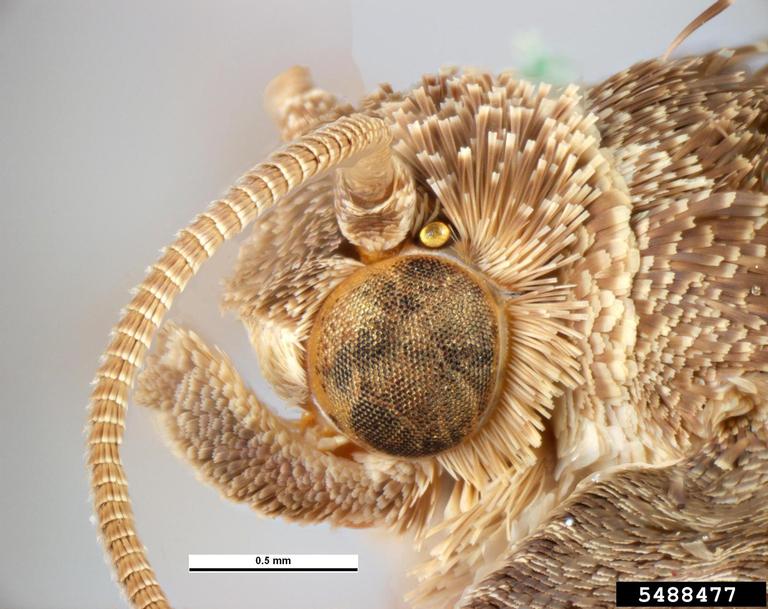 | 16a: INSECT Codling Moth (Cydia pomonella) (Photo credit: Eugene E. Nelson, Bugwood.org) |
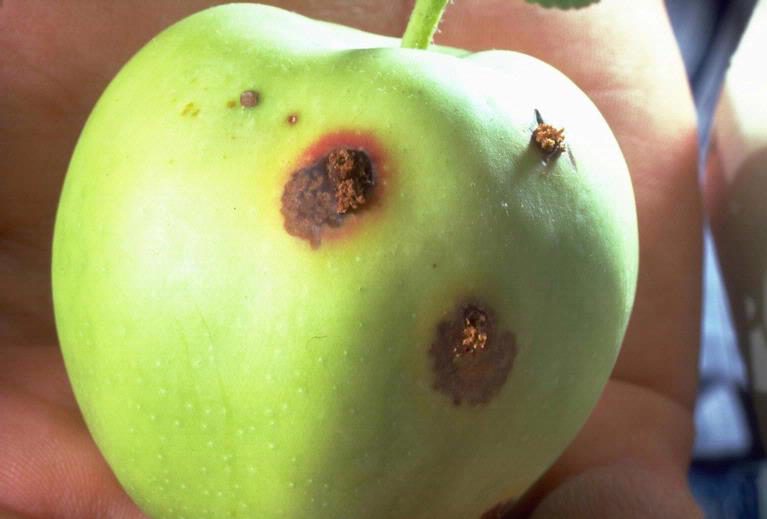 | 16b: INSECT Codling Moth Damage (Photo credit: Eugene E. Nelson, Bugwood.org) |
Table 17. Strawberry
| Photo | Description |
|---|---|
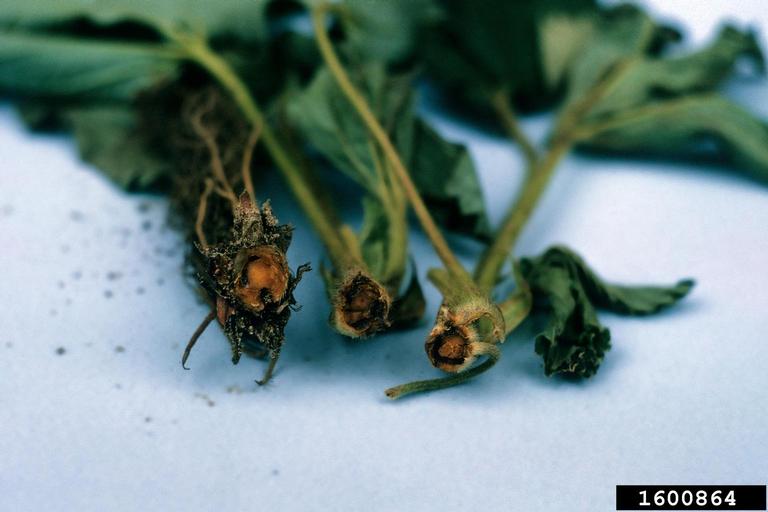 | 17a: INSECT Crown Borer (Tyloderma fragariae) (Photo credit: John C. French Sr., Retired, Universities: Auburn, GA, Clemson and U of MO, Bugwood.org) |
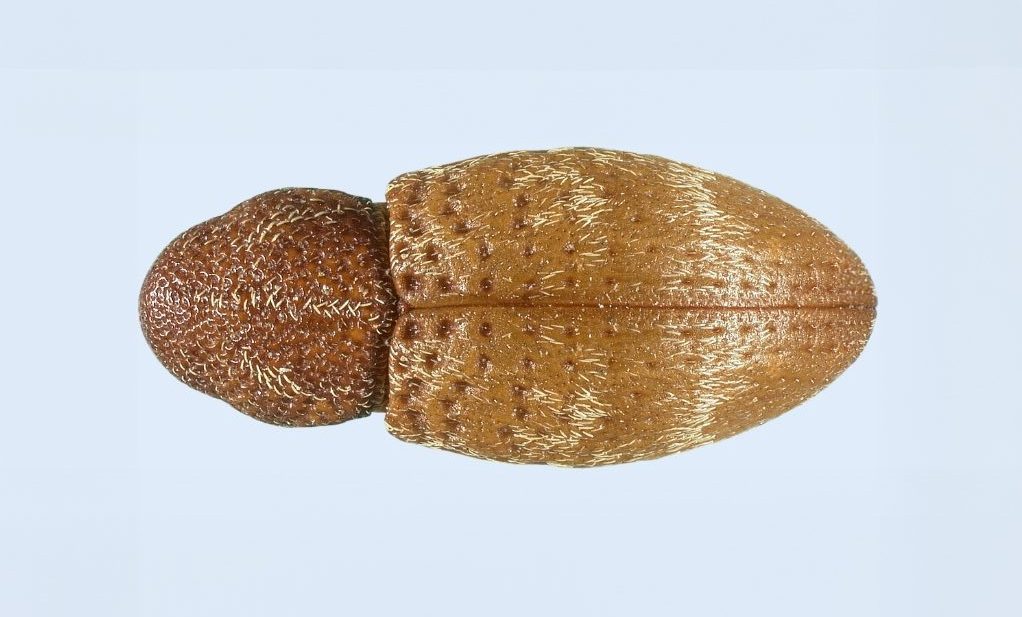 | 17b: INSECT Crown Borer (Dorsal) (Magnified) (Photo credit: Natasha Wright, Braman Termite & Pest Elimination, Bugwood.org) |
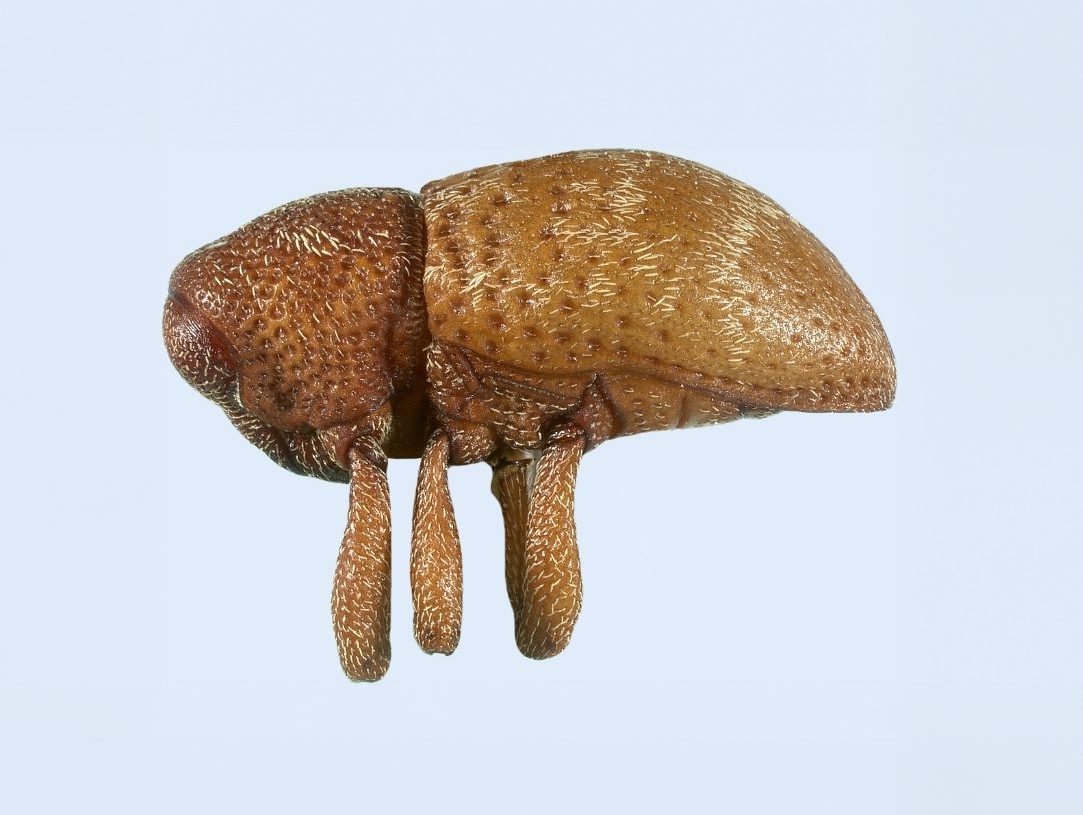 | 17c: INSECT Crown Borer (Lateral) (Magnified) (Photo credit: Natasha Wright, Braman Termite & Pest Elimination, Bugwood.org) |
Table 18. Bunch Grape
| Photo | Description |
|---|---|
 | 18: INSECT European Red Mite (Panonychus ulmi) This slightly magnified image shows European spider mites (see arrow), which are reddish in color. (Photo credit: University of Georgia Plant Pathology, University of Georgia, Bugwood.org) |
Table 19. Bunch Grape
| Photo | Description |
|---|---|
 | 19: INSECT Grape Berry Moth (Paralobesia viteana) (Photo credit: Mark Dreiling, Bugwood.org) |
Table 20. Peach, Plum, Nectarine
| Photo | Description |
|---|---|
 | 20: INSECT Grasshopper (Camnula pellucida) (Photo credit: Whitney Cranshaw, Colorado State University, Bugwood.org) |
Table 21. Bunch Grape
| Photo | Description |
|---|---|
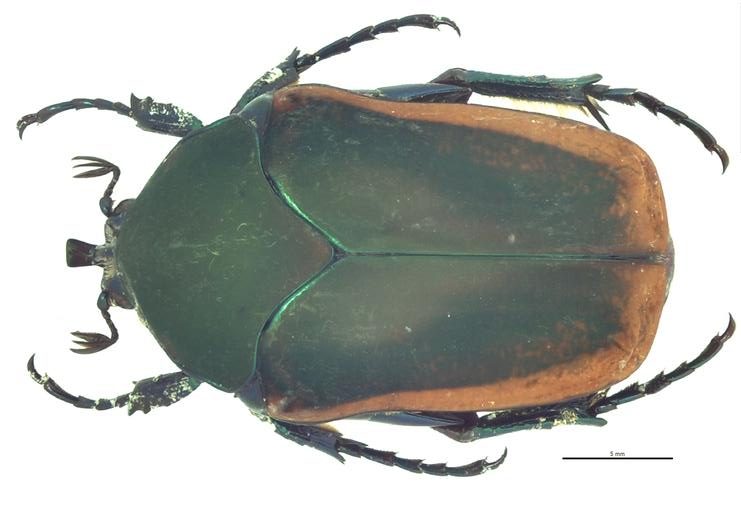 | 21: INSECT Green June Beetle (Cotinis mutabilis) (Photo credit: Emmy Engasser, Hawaiian Scarab ID, USDA APHIS PPQ, Bugwood.org) |
Table 22. Apple, Blackberry, Blueberry, Bunch Grape
| Photo | Description |
|---|---|
 | 22: INSECT Japanese Beetle (Popillia japonica) (Photo credit: Clemson University - USDA Cooperative Extension Slide Series, Bugwood.org) |
Table 23. Peach, Plum, Nectarine, Bunch Grape
| Photo | Description |
|---|---|
 | 23: INSECT Leaf-Footed Bug (Family: Coreidae) (Photo credit: Ronald Smith, Auburn University, Bugwood.org) |
Table 24. Apple, Pear, Blueberry
| Photo | Description |
|---|---|
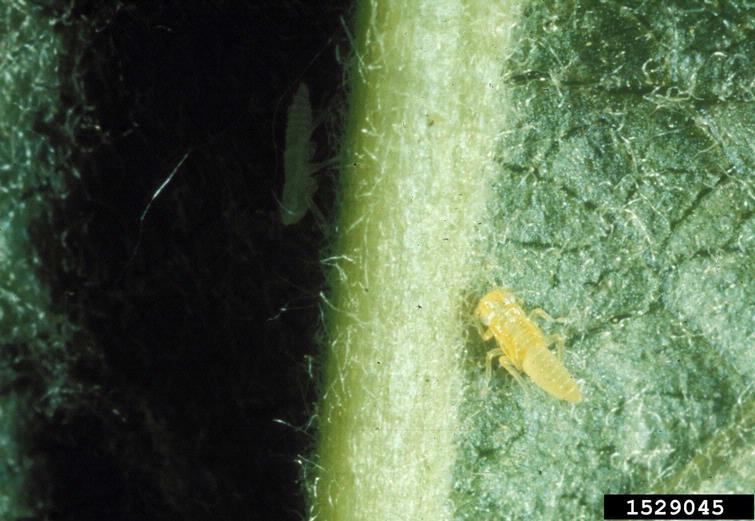 | 24: INSECT White Apple Leafhopper (Typhlocyba pomaria) (Photo credit: University of Georgia Plant Pathology, University of Georgia, Bugwood.org) |
Table 25. Apple, Pear, Strawberry
| Photo | Description |
|---|---|
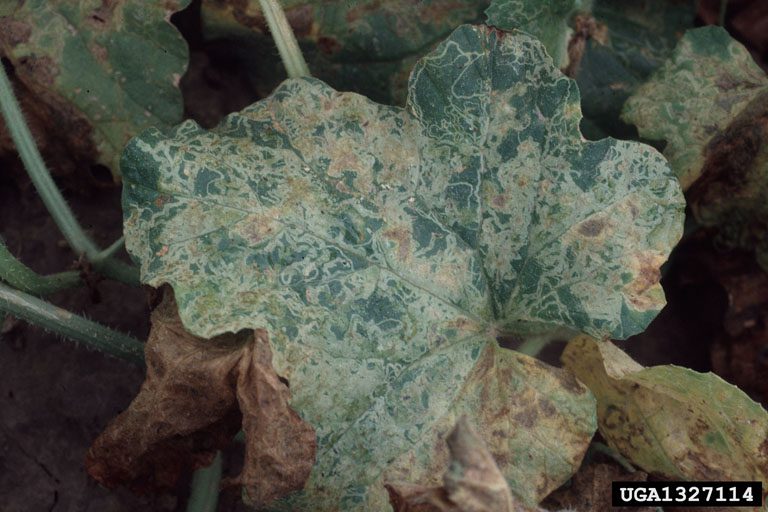 | 25: INSECT Leafminer (Genus: Liriomyza) (Photo credit: Alton N. Sparks, Jr., University of Georgia, Bugwood.org) |
Table 26. Apple, Pear, Strawberry
| Photo | Description |
|---|---|
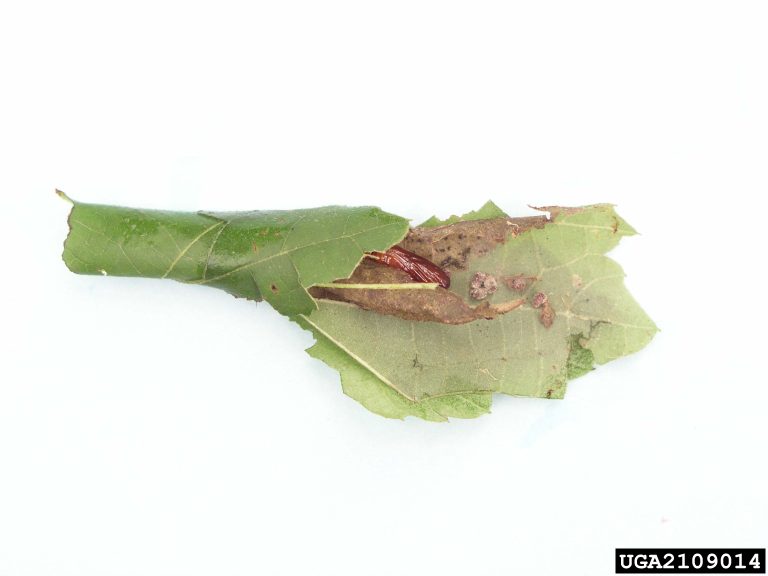 | 26: INSECT Leafroller (Pantographa limata) (Photo credit: John L. Foltz, University of Florida, Bugwood.org) |
Table 27. Peach, Plum, Nectarine
| Photo | Description |
|---|---|
 | 27a: INSECT Lesser Peach Tree Borer (Synanthedon pictipes) (Photo credit: Carroll E. Younce, USDA Agricultural Research Service, Bugwood.org) |
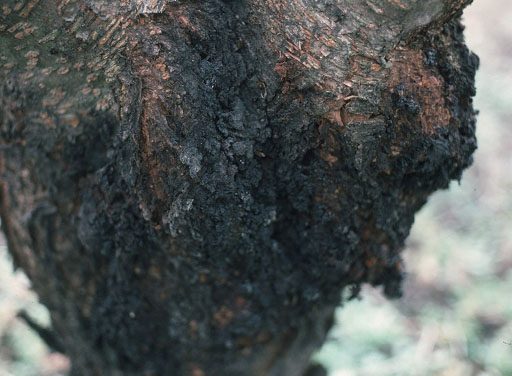 | 27b: INSECT Lesser Peach Tree Borer Damage on Trunk (Photo credit: Carroll E. Younce, USDA Agricultural Research Service, Bugwood.org) Over time, repeated attacks by lesser peach tree borer will result in multiple entry wounds. An amber-colored gum-like substance will exude from the tree which turns dark brown to black in color. |
Table 28. Apple, Pear, Peach, Plum, Nectarine
| Photo | Description |
|---|---|
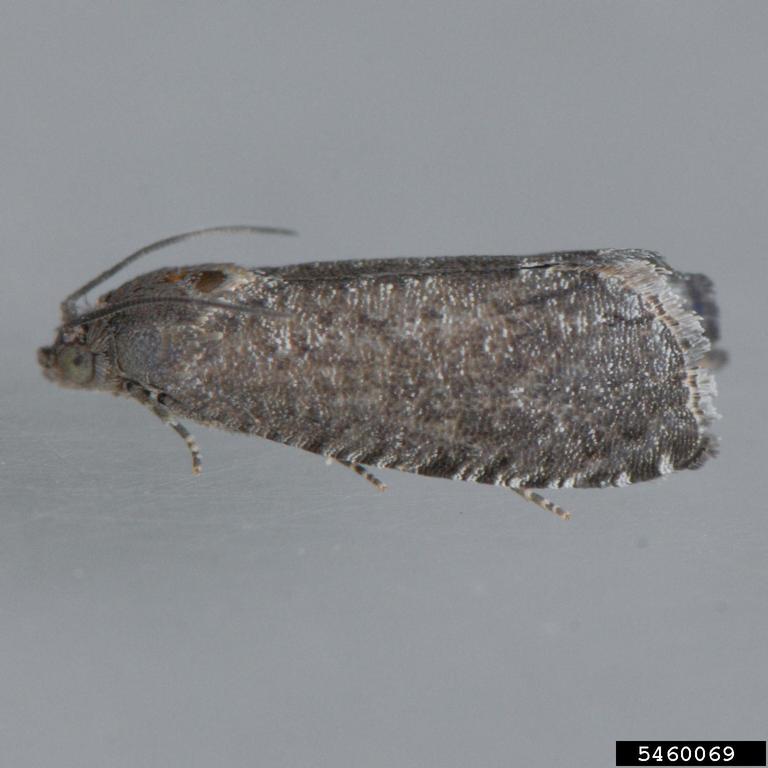 | 28a: INSECT Oriental Fruit Moth Adult (Grapholita molesta) (Photo credit: Mark Dreiling, Bugwood.org) |
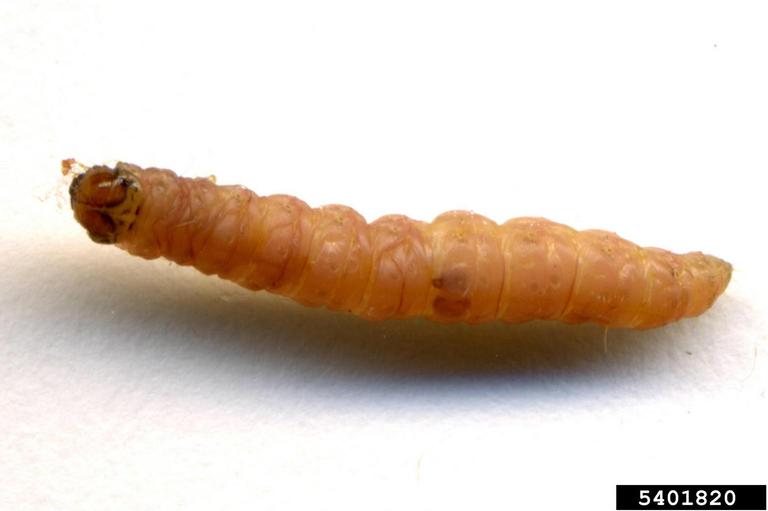 | 28b: INSECT Oriental Fruit Moth Larva (Photo credit: Lesley Ingram, Bugwood.org) |
Table 29. Apple, Pear, Peach, Plum, Nectarine, Bunch Grape
| Photo | Description |
|---|---|
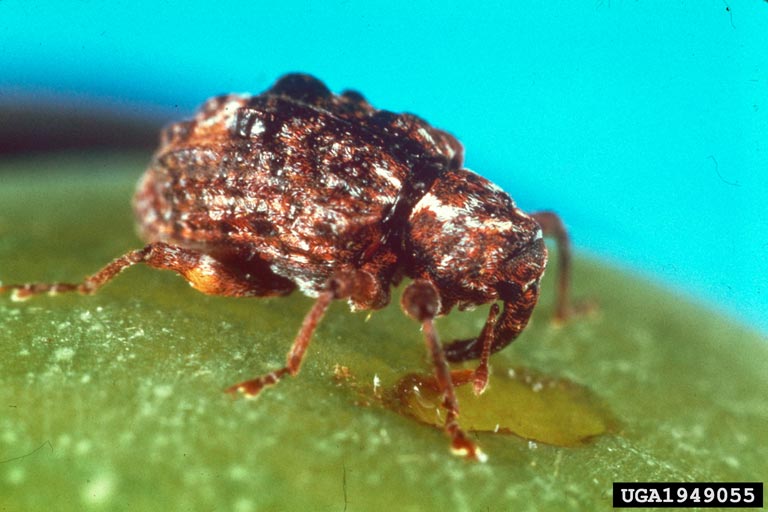 | 29: INSECT Plum Curculio (Prunus domestica L.) (Photo credit: E. Levine, The Ohio State University, Bugwood.org) |
Table 30. Bunch Grape
| Photo | Description |
|---|---|
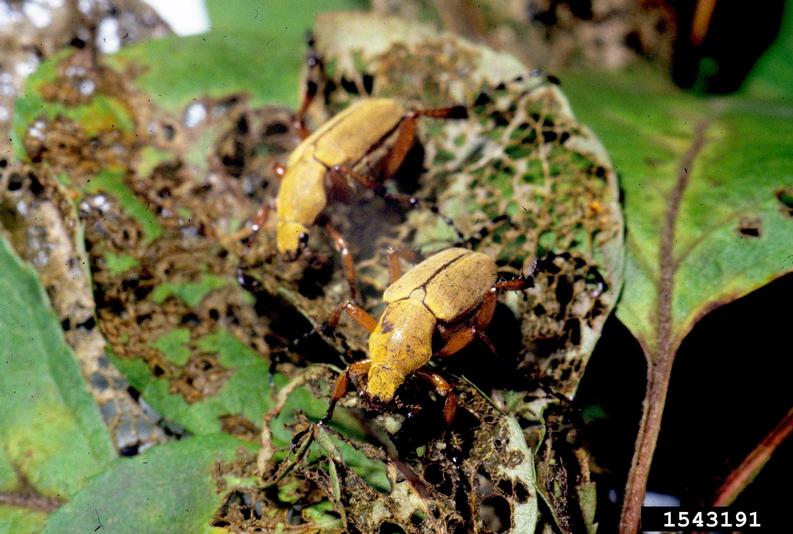 | 30: INSECT Rose Chafer (Macrodactylus subspinosus) (Photo credit: Jim Baker, North Carolina State University, Bugwood.org.) |
Table 31. Apple, Pear, Peach, Plum, Nectarine, Bunch Grape
| Photo | Description |
|---|---|
 | 31: INSECT Stinkbug (Family: Pentatomidae) (Photo credit: David Cappaert, Bugwood.org) |
Table 32. Blackberry, Blueberry, Bunch Grape, Fig, Strawberry
| Photo | Description |
|---|---|
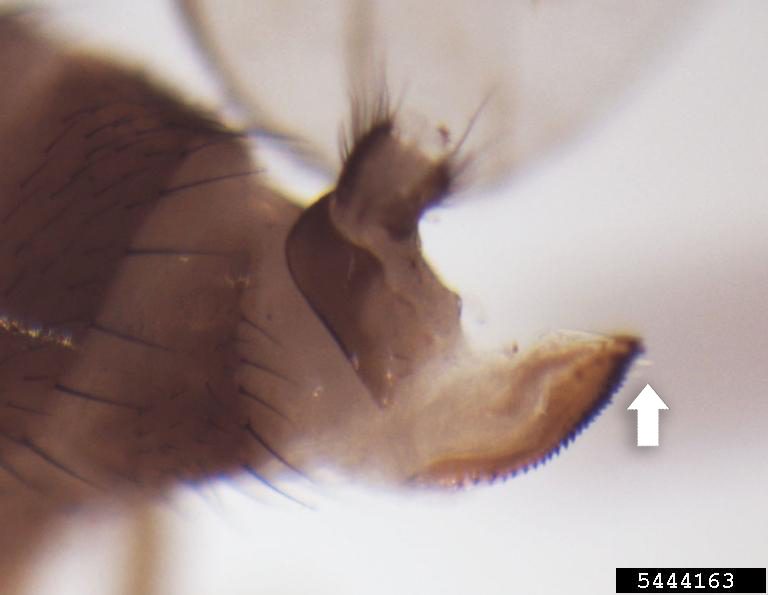 | 32a: INSECT Spotted Wing Drosophila Female (Drosophila suzukii) (Photo credit: Hannah Burrack, North Carolina State University, Bugwood.org) The female has a serrated ovipositor (see arrow) unlike other female fruit flies. This allows the female spotted winged drosophila to penetrate fruit that is undamaged or uncompromised. |
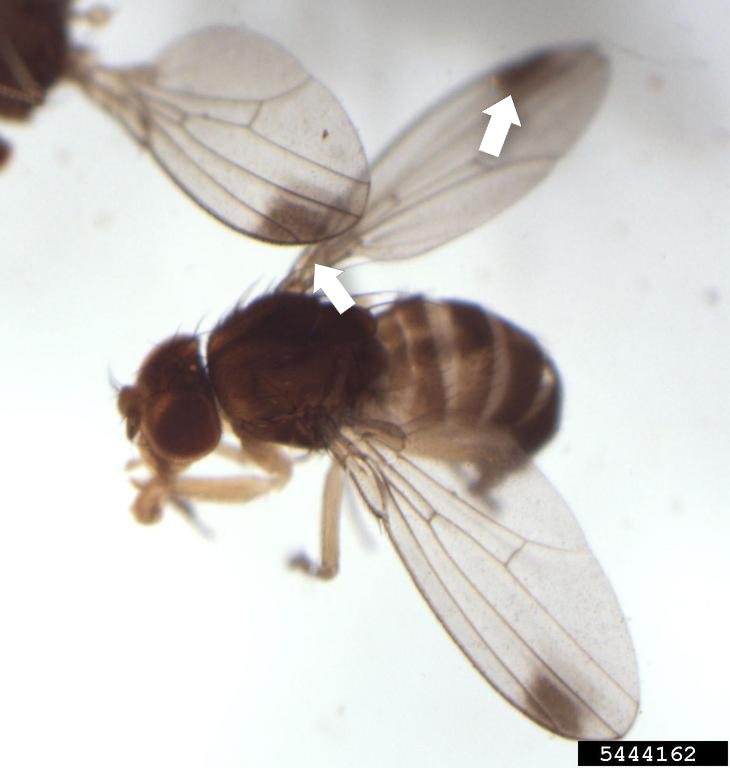 | 32b: INSECT Spotted Wind Drosophila Male (Photo credit: Hannah Burrack, North Carolina State University, Bugwood.org) The male has a dark spot near the tips of the wings (see arrow). These spots are missing from the female. |
Table 33. Strawberry
| Photo | Description |
|---|---|
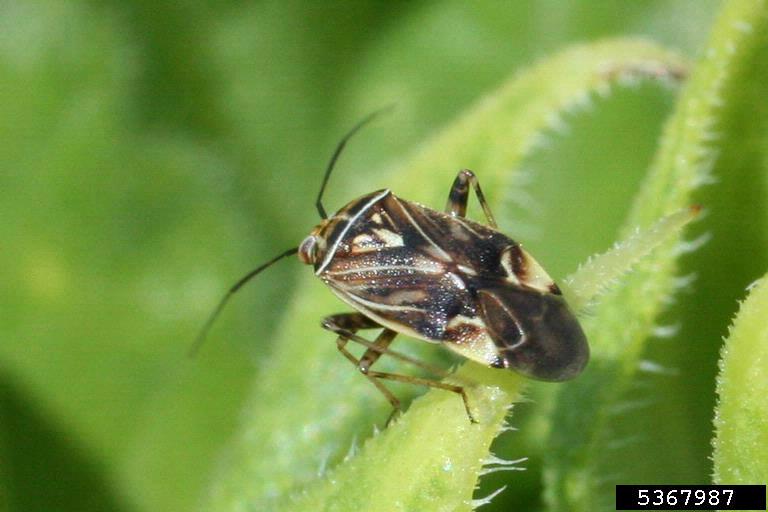 | 33: INSECT Tarnished Plant Bug (Lygus lineolaris) (Photo credit: Russ Ottens, University of Georgia, Bugwood.org) |
Table 34. Blueberry
| Photo | Description |
|---|---|
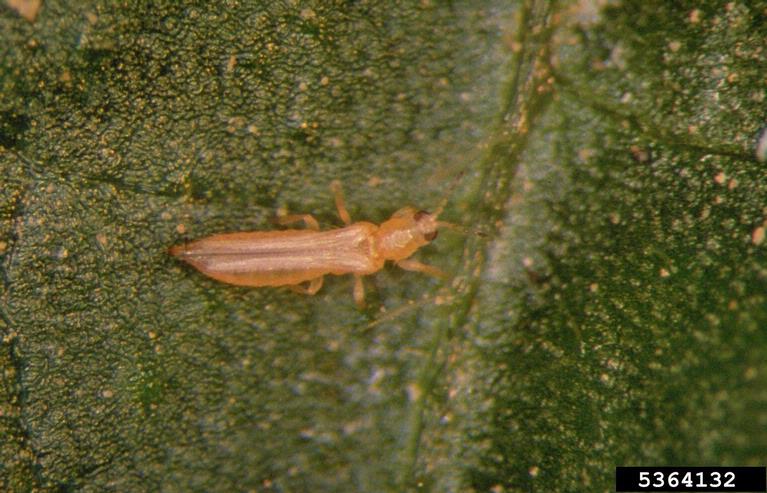 | 34: INSECT Thrips (Frankliniella occidentalis) (Magnified) (Photo credit: Frank Peairs, Colorado State University, Bugwood.org) |
Table 35. Peach, Plum, Nectarine, Strawberry
| Photo | Description |
|---|---|
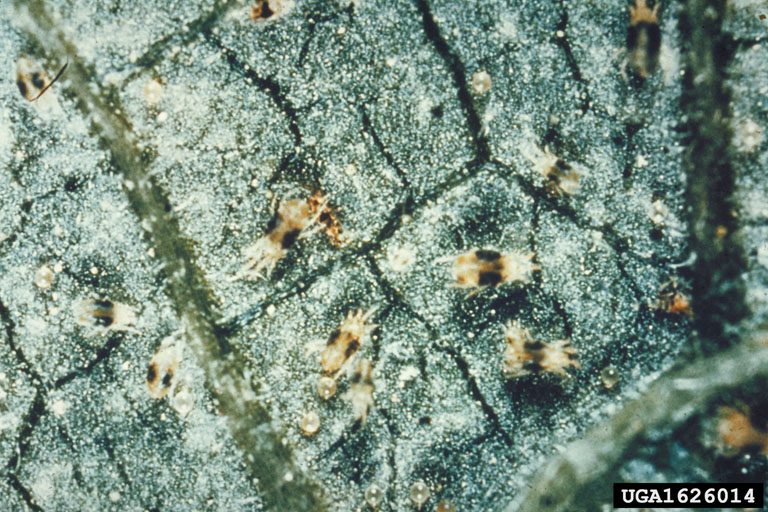 | 35: INSECT Two-Spotted Spider Mite (Tetranychus urticae) (Magnified) (Photo credit: John A. Weidhass, Virginia Polytechnic Institute and State University, Bugwood.org) |
Table 36. Strawberry
| Photo | Description |
|---|---|
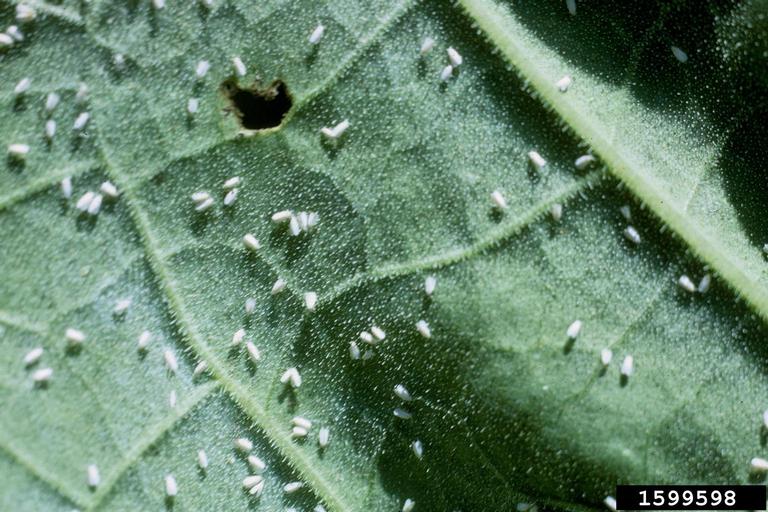 | 36a: INSECT Whitefly (Family: Aleyrodidae) (Photo credit: John C. French Sr., Retired, Universities Auburn, GA, Clemson and U of MO, Bugwood.org) |
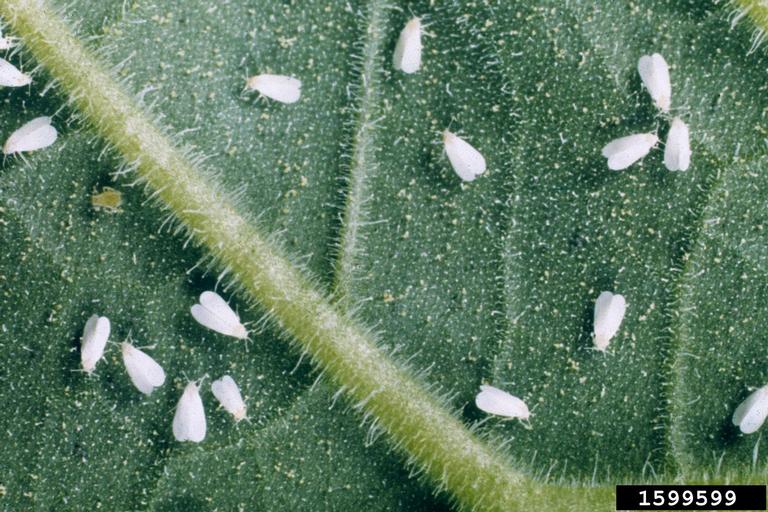 | 36b: INSECT Whitefly (closeup) (Photo credit: John C. French Sr., Retired, Universities: Auburn, GA, Clemson and U of MO, Bugwood.org) |
Table 37. Bunch Grapes, Fig
| Photo | Description |
|---|---|
 | 37: INSECT Yellow Jacket (Family: Vespidae) (Photo credit: Jerry A. Payne, USDA Agricultural Research Service, Bugwood.org) |
 Edgar Vinson, Extension Fruit Specialist, Assistant Extension Professor, Commercial Horticulture, and James Jacobi, Extension Specialist, Commercial Horticulture, both with Auburn University
Edgar Vinson, Extension Fruit Specialist, Assistant Extension Professor, Commercial Horticulture, and James Jacobi, Extension Specialist, Commercial Horticulture, both with Auburn University
Revised November 2023, Home Orchards Disease and Insect Identification Guide, IPM-1308-A
